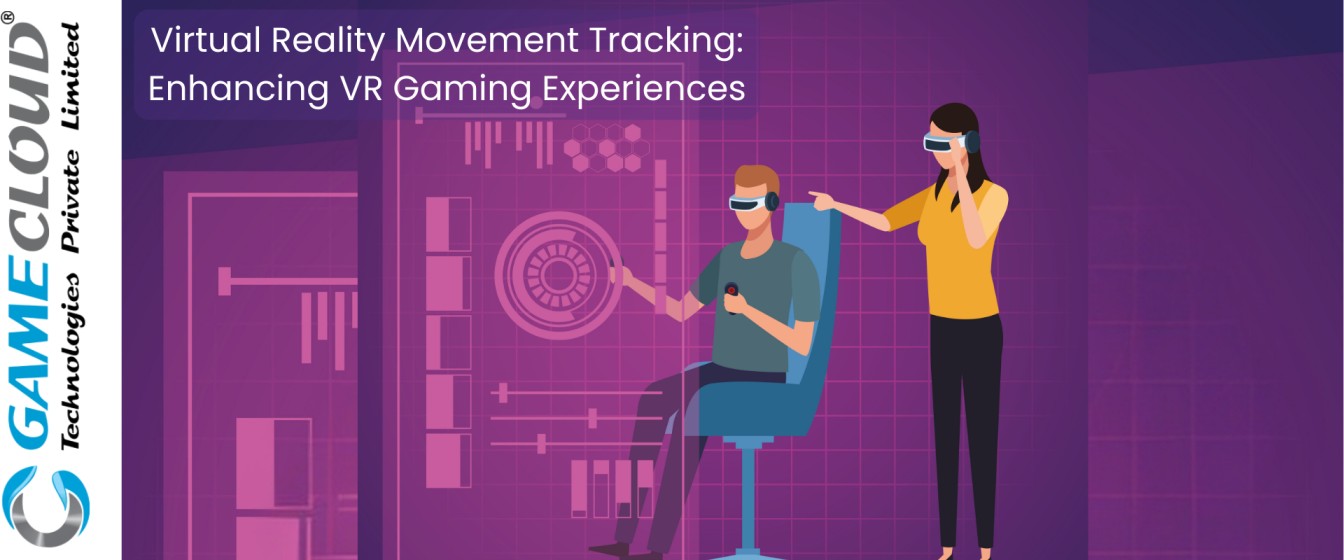
Virtual Reality (VR) has come a long way since its inception, transforming from a sci-fi concept into a tangible, immersive technology. At the heart of this evolution lies movement tracking – the linchpin that bridges the physical and virtual worlds. This blog delves into the intricacies of VR movement tracking, exploring how it’s transforming gaming experiences and pushing the boundaries of human-computer interaction.
The Anatomy of VR Movement Tracking
- Inertial Measurement Units (IMUs)
Inertial measurement units (IMUs) are critical components enabling immersive virtual reality (VR) experiences. IMUs combine accelerometers, gyroscopes, and magnetometers to precisely track rotational motion of VR headsets and controllers. Advanced sensor fusion algorithms fuse IMU data to provide low-latency, high-accuracy orientation tracking essential for eliminating motion sickness and disorientation. IMUs are used in VR headsets to track head movement and in handheld controllers to capture hand motion, translating real-world movement into the virtual environment. Without IMUs, VR would not be possible, making them unsung heroes powering today’s immersive VR experiences.
- Optical Tracking Systems
IMUs are useful for tracking rotations, but lack position accuracy. Modern VR headsets employ inside-out tracking, using onboard cameras to scan the environment and build a 3D map using SLAM. Some systems use outside-in tracking, with external sensors emitting infrared signals detected by photosensors on the headset and controllers to precisely calculate position via triangulation. Inside-out offers flexibility, while outside-in provides higher accuracy in larger spaces. Advancing technology will yield more sophisticated tracking solutions for enhanced VR immersion.
- Sensor Fusion
The real magic happens when we combine these tracking methods. Sensor fusion algorithms integrate data from IMUs, optical systems, and sometimes additional sensors like time-of-flight cameras. This multi-pronged approach results in:
- Lower latency: IMUs provide immediate feedback for quick movements
- Higher accuracy: Optical systems correct for IMU drift over time
- Robustness: Multiple data sources compensate for individual sensor weaknesses
Breaking Down the Tracking Pipeline
Understanding the tracking pipeline helps us appreciate the complexity behind smooth VR experiences:
- Data Acquisition: Sensors continuously gather raw movement data.
- Preprocessing: Noise reduction and calibration adjustments clean up the data.
- Sensor Fusion: Algorithms combine data from multiple sources.
- Prediction: Based on current and past data, the system predicts future positions.
- Rendering: The game engine uses the tracking data to update the virtual environment.
This entire process happens in milliseconds, multiple times per second, to maintain the illusion of seamless movement.
The Future of VR Movement Tracking
As virtual reality technology advances, full-body tracking emerges as a key innovation, integrating multiple sensors for precise skeletal tracking, markerless body tracking via computer vision, and pressure-sensitive mats for foot tracking and gesture recognition. Eye tracking in VR headsets enhances the experience by optimizing graphics processing through foveated rendering, enabling intuitive menu navigation and object selection via gaze-based interactions, and facilitating realistic eye contact in multiplayer environments.
Implications for Gaming
Advancements in VR movement tracking are reshaping gaming by enabling enhanced immersion, precise control, and new mechanics. Accurate, low-latency tracking allows for natural interactions, blurring the line between physical and virtual actions. Full-body tracking enables complex movements in games, from martial arts simulators to dance competitions where every motion matters, creating a deeper sense of presence and making gaming feel more real. These advancements are making VR gaming more accessible, introducing new genres that blend entertainment with fitness, and turning physical exertion into gameplay. As VR evolves, we can expect more realistic graphics, haptic feedback, and AI advancements, further blurring the virtual and physical realms.
QualityReality’s Expertise in VR Movement Tracking
As a leading provider of XR testing services, QualityReality can play a crucial role in enhancing VR gaming experiences through our expertise in movement tracking. By conducting rigorous functional testing, compatibility testing, and performance testing across a wide range of VR platforms and devices, We ensure that VR games are optimized for smooth and responsive movement tracking, providing users with an immersive and enjoyable gaming experience. Our team of certified QA testers and experienced engineers work closely with developers to identify and resolve any issues related to movement tracking, such as lag, jitter, or drift, ensuring that the VR gaming experience is as realistic and comfortable as possible.
Conclusion: A New Reality Awaits
With pinpoint accuracy, actions in the real world are beginning to translate over into gaming and we could be on the brink of a new gaming era where your physical movement is implemented directly into virtual experience disregarding reality. The VR industry will have to tackle these concerns on the path of reinvention, in order to provide futuristic gaming experiences that are increasingly intuitive and immersive. The more we develop our ability to make things move and keep track of that movement, the wilder virtual excursions will get: gaming taken to a realm where reality is itself in play — a test not just of whether we can push into tomorrow with creative vision but also extend ourselves as sentient beings.
